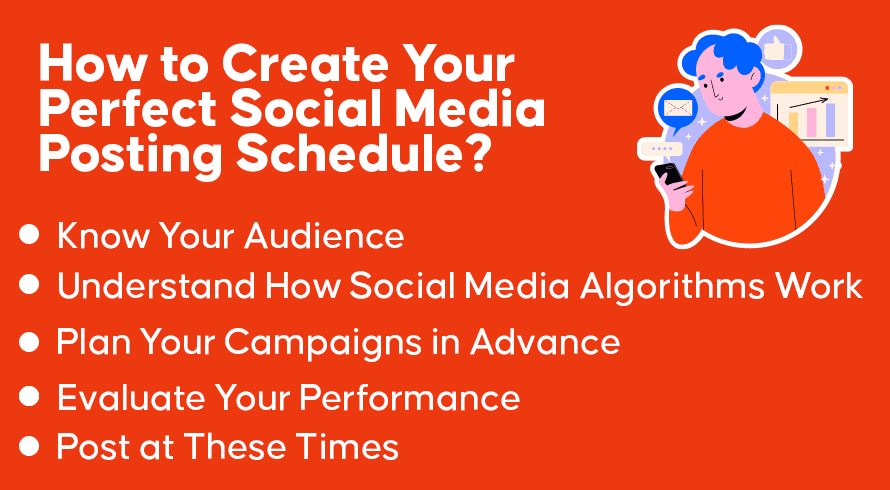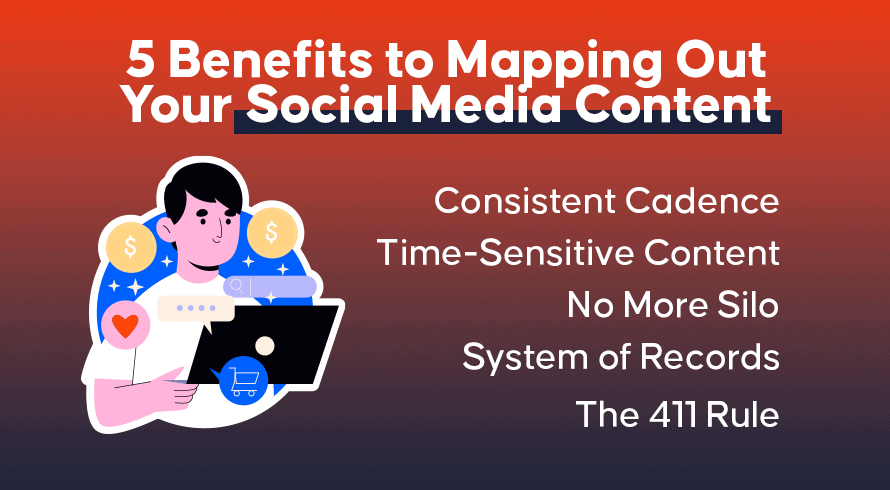Inquivix HQ
1-903, 18 Eonju-ro 146-gil,
Gangnam-gu, Seoul, Korea
06057

If you’re like most businesses, you’re using social media to help promote your products and services. But if you’re not using social media scheduling tools, then you’re missing out on a lot of potential traffic.
As all marketers understand, staying ‘on top of the game’ when it comes to social media is essential. Social media platforms are among the most popular online activities, with almost 80% of internet users now using them. As a matter of fact, those individuals who use social networking sites, 60% visit them on a daily basis. It’s also critical to keep in mind that no matter how much social media never sleeps, you do. As a result, putting your life on hold or waking up at strange hours to post is not an option.
Social media scheduling tools allow you to pre-schedule your posts so that they go live at the best times for your audience. This can help you maintain a consistent presence on social media, which is essential for building trust with your followers. In this blog post, we’ll discuss how social media scheduling can help improve your marketing efforts.
What Is a Social Media Schedule?
A social media schedule is a plan for your social media posts. It can help you keep track of what you want to post and when, as well as ensure that your accounts are regularly updated. Social media calendars can be found in a variety of formats, including online tools, Excel spreadsheets, or even good old-fashioned paper calendars!
Having a social media schedule can be helpful if you’re looking to grow your audience or increase engagement on your account. By spacing out your posts and varying the type of content you share, you can create a consistent flow of information that will keep people coming back for more.
In order to be successful, you’ll need to stay organized and produce content ahead of time for all of your future social media marketing efforts. There isn’t a “one-size-fits-all” perfect plan. The optimum frequency and time for your social media updates will be determined by a variety of factors, including your target audience and sector.
Why Is Social Media Important for Your Business?
You must be aware of current industry developments in order to succeed in an increasingly competitive market. In reality, social media data is used by more than 70% of businesses to make commercial decisions. So, how can you stay ahead of the pack and ensure that your company makes every effort toward success? Of course, social networking is one answer.
You can use social media channels to create brand awareness and recognition. It gives you a stage to tell your brand’s story and generate conversations around your brand. Monitoring your social media campaigns can help you gather data to understand your target audience’s needs and wants.

Social media is a great way to increase customer loyalty through responsive customer services. It can also increase your brand visibility and generate traffic. Social networking helps you find collaborators for your brand. In short, social media is a powerful marketing and communications tool that should not be ignored by businesses.
What Is Social Media Management?
Social media management is developing and executing a social media strategy for the company. This can include creating social media content, managing multiple social media accounts, tracking analytics, and engaging with followers. Social media management can be important for businesses as it allows them to connect with customers and followers on a more personal level. Additionally, social media can help businesses grow their online presence and reach new audiences.
When it comes to social media management, there are a few key things businesses should keep in mind. First, social media should be used to build relationships with customers and followers, not just sell products or services. Additionally, social media content should be relevant to your target audience and consistent with your brand. It’s also important to track analytics so you can see how well your social media strategy is working and make changes as needed.
How to Create Your Perfect Social Media Posting Schedule?
A posting timetable will help you stay organized and ensure that you have postings prepared ahead of time for all of your future social media marketing efforts. However, there is no such thing as a “perfect” plan for all businesses. The best frequency and timing for your social media posts will vary depending on who your target audience is and what industry you are in. To figure out when to post on social media, follow these five steps. You’ll receive a sure-footed strategy for social media domination at the end of the procedure.
Know Your Audience
The first step in creating a social media schedule is knowing your audience. In order for your social media plan to be effective, you must first know:
- Who are you trying to reach out to with your message?
- What time of day are they generally active?
- Where do they spend their time online, and when? Do they begin their day with Twitter and wind it up on Instagram at the end of the day?
Understand How Social Media Algorithms Work
Usually, “the algorithm” gets the blame when the content does not perform. While bad content sometimes just fails due to its poor quality, algorithms do play an important part in what your audience sees on social media.
The algorithm is a term for a set of rules designed by social media sites that determine how your content appears on the user’s screen. Depending on the platform, the algorithm may act differently. The best way to ensure your content reaches your audience is to understand the algorithms that govern each social media platform and then design your posts accordingly.

Plan Your Campaigns in Advance
It’s also a good idea to plan ahead for any big product releases, significant events, and seasonal advertising campaigns before they happen. To keep everything in order, make a high-level social media calendar. This isn’t only where you write and plan your post content. It’s also part of your social media content strategy to keep track of everything you need to get out into the world. It’s your go-to resource for what to post, not just when to do so. It might be as simple as a to-do list to ensure you get everything done on time — without the last-minute stress.
Evaluate Your Performance
We’ve already discussed the significance of knowing when your audience is online. But you must also conduct tests. Following the same social media posting schedule may affect the performance of your digital marketing campaigns, and it will not yield the best results for your social media efforts.
You do not have to completely alter things up every week if you don’t want to. You’ll need a point of reference so that you can tell whether any of your efforts are working. Try conducting one experiment each month. For a month, change one of your conventional publishing days or times to a new one and compare the results.
Post at These Times
All of the above is true, but you shouldn’t post content at random times on the internet without conducting proper audience research first. However, the optimum time to post on social media throughout the day is between 10:00 a.m. and 6:00 p.m., with Tuesdays, Wednesdays, and Thursdays being the best days.
5 Benefits to Mapping Out Your Social Media Content
When you think about it, the short lifespan of updates and the quick transmission of information across Twitter, Facebook, and other platforms make social media content feel more in the moment and real-time. This can be great for promoting events, sharing news as it happens, and giving your followers a sense of being in the loop. But it also means that if you don’t have a plan for what you want to say and when your social media content could quickly become disorganized and ineffective.

That’s where mapping comes in. Mapping out your social media content is a great way to keep everything organized and on track. It allows you to create a structure for your updates that will help ensure that each post is timely, relevant, and engaging. Plus, it makes creating future content easier since you already have an outline of what you want to talk about.
#1 Consistent Cadence
There’s a lot to be said for social media consistency. Consistency may assist your audience in learning when new material from you is expected, and maintaining a consistent schedule ensures that you get the most out of your content without hitting any lulls or gaps in communication.
#2 Time-Sensitive Content
Many of these time-sensitive activities, such as launches, events, and holidays, can all be scheduled in advance and placed on a calendar. This will help you keep track of them and effectively execute the campaigns.
#3 No More Silo
When social media develops and publishes in real-time, it happens in minutes. Planning ahead allows for the involvement of a larger group rather than just a silo of one or two social media managers. This allows the creation of better and more effective content.
#4 System of Records
Keeping a calendar allows you to look back on it at a later time. You may track the changes you made, and you can compare your posting frequency and rhythm from one period to the next.
#5 The 411 Rule
When mapping out your social media content, it’s important to remember the 411 rule and keep a good balance of promotional and informational posts; 4 educational and informative posts for 1 “hard promotion” and 1 “soft promotion”. This will help keep your followers engaged and interested in what you have to share.
How Can I Schedule Social Posts?
There are a few different options when it comes to scheduling social media posts. The most common way is to use the built-in tools on each platform. Another way is to use a separate scheduling tool, which you can set up so that all of your accounts are in one place. The most important thing is to make sure that your content is scheduled for the best time for your audience.
You can generally use the built-in tools on each platform. The built-in tools on each platform vary, but they all have some sort of scheduler. For example, on Twitter, you can schedule tweets by going to “Timing and Schedule” under Settings. Other social media platforms have their own scheduling tools.
Or else, you can use a separate social media scheduling tool. If you’re using a third-party social media scheduler tool, make sure that you have all of your accounts set up in the tool so that you can easily post to them. There are various options available for free with the basic features and paid versions with advanced features.
Conclusion
When done correctly, social media scheduling can be a powerful tool to help you maintain your online presence. By creating and uploading content ahead of time, you can ensure that your channel is always active and engaging. This approach also allows you to focus on other important tasks, without having to worry about posting updates regularly. Ultimately, social media scheduling can help you save time and energy while keeping your audience engage
